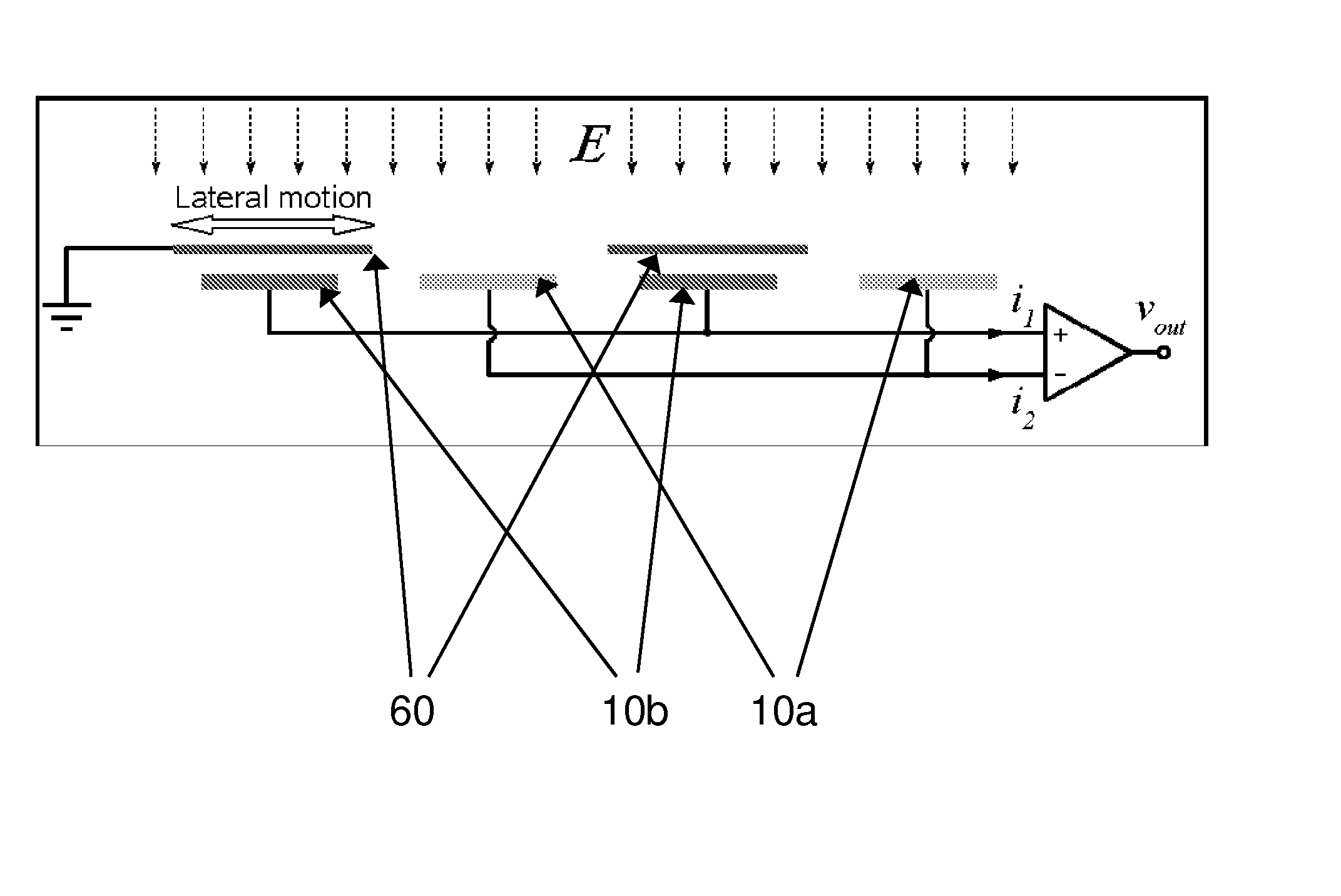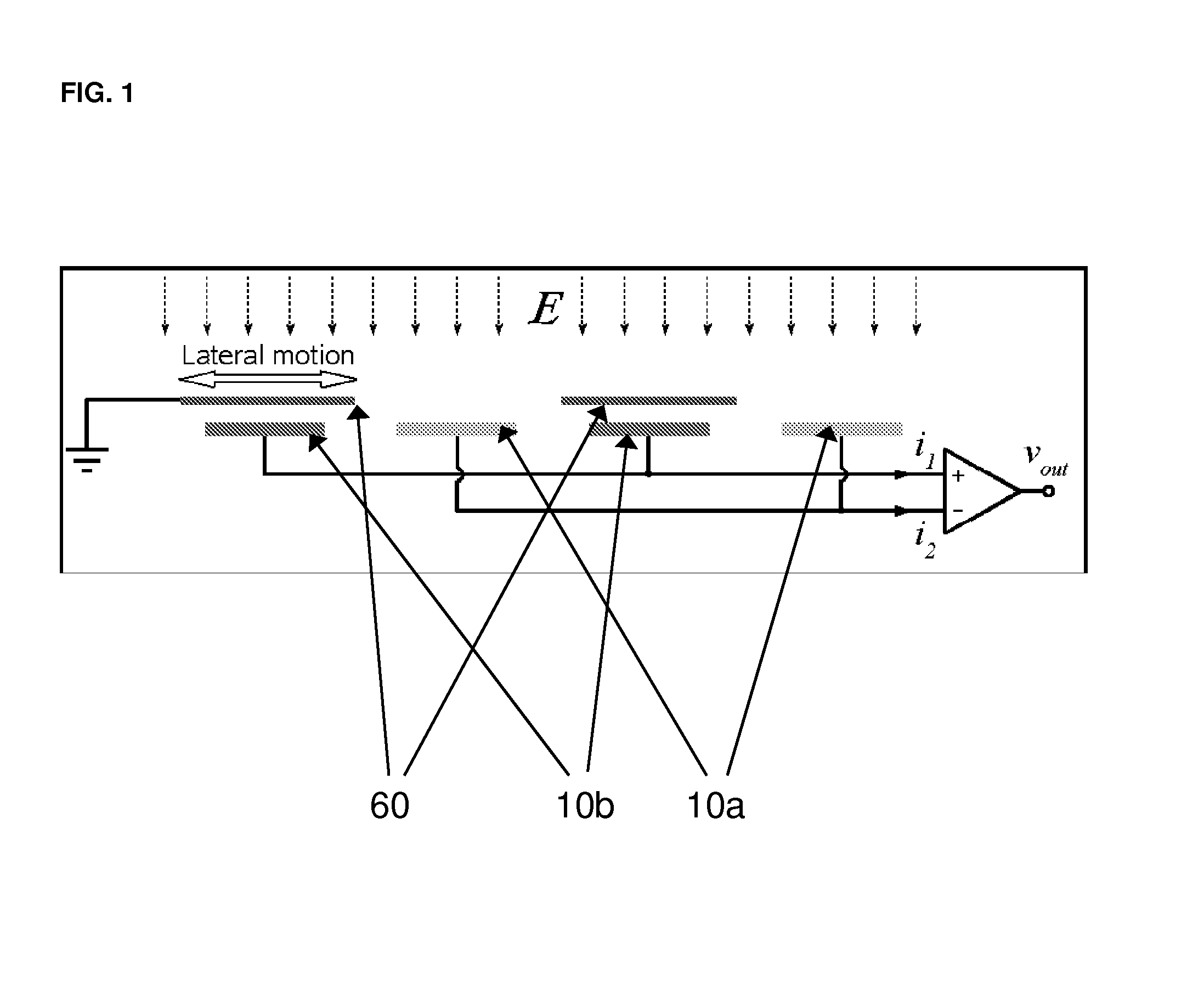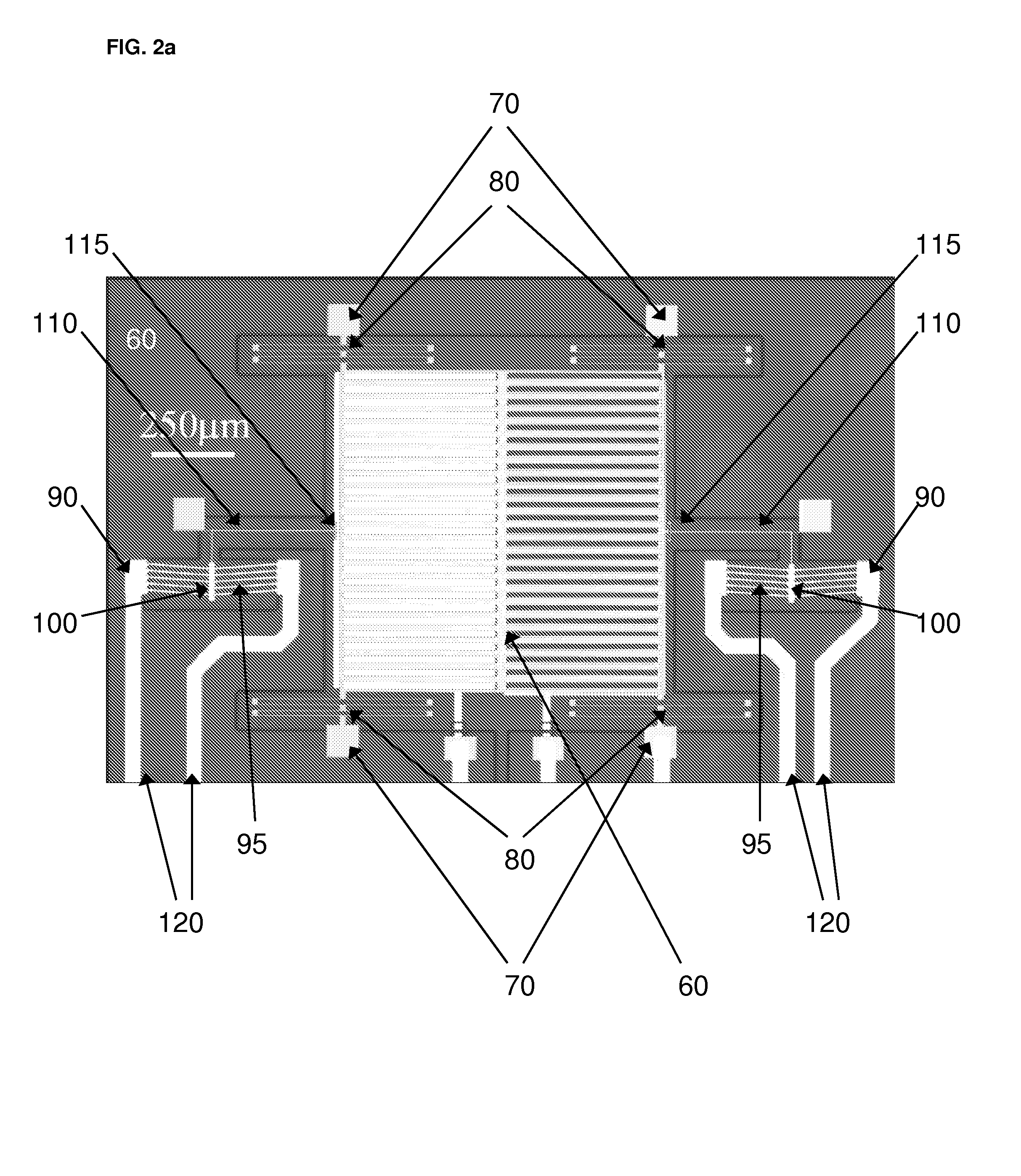Microelectromechanical Electric Potential Sensor
a micro-electromechanical and electric potential technology, applied in the direction of electrostatic field measurement, instruments, measurement devices, etc., can solve the problems of affecting sensor sensitivity and accuracy, affecting the sensitivity of the sensor, and requiring frequent maintenance, so as to improve sensitivity and accuracy, the effect of reducing interferen
- Summary
- Abstract
- Description
- Claims
- Application Information
AI Technical Summary
Benefits of technology
Problems solved by technology
Method used
Image
Examples
Embodiment Construction
[0052]Referring to the accompanying drawings, FIG. 1 is a simple diagrammatic illustration of the basic operating principles of a microelectromechanical variable capacitive coupling electric field MEFS, illustrating the intermittent charging of the sensor electrodes 10a and 10b by the electric field as the microshutter (or shielding electrode) 60 repeatedly shields and exposes the sensor electrodes to the field. Note that the output current (signal) of electrodes 10a would be 180° asynchronous with the output current (signal) of electrodes 10b, both of which are correspondingly conveyed and manipulated downstream by conventional methods for calibration and calculation of electric field strengths.
[0053]Referring to FIG. 2a, there is illustrated a microelectromechanical variable capacitive coupling electric field MEFS setup according to the present invention generally indicated by reference numeral 50.
[0054]In this particular embodiment, the MEFS 50 generally comprises two rows of sen...
PUM
 Login to View More
Login to View More Abstract
Description
Claims
Application Information
 Login to View More
Login to View More - R&D
- Intellectual Property
- Life Sciences
- Materials
- Tech Scout
- Unparalleled Data Quality
- Higher Quality Content
- 60% Fewer Hallucinations
Browse by: Latest US Patents, China's latest patents, Technical Efficacy Thesaurus, Application Domain, Technology Topic, Popular Technical Reports.
© 2025 PatSnap. All rights reserved.Legal|Privacy policy|Modern Slavery Act Transparency Statement|Sitemap|About US| Contact US: help@patsnap.com



